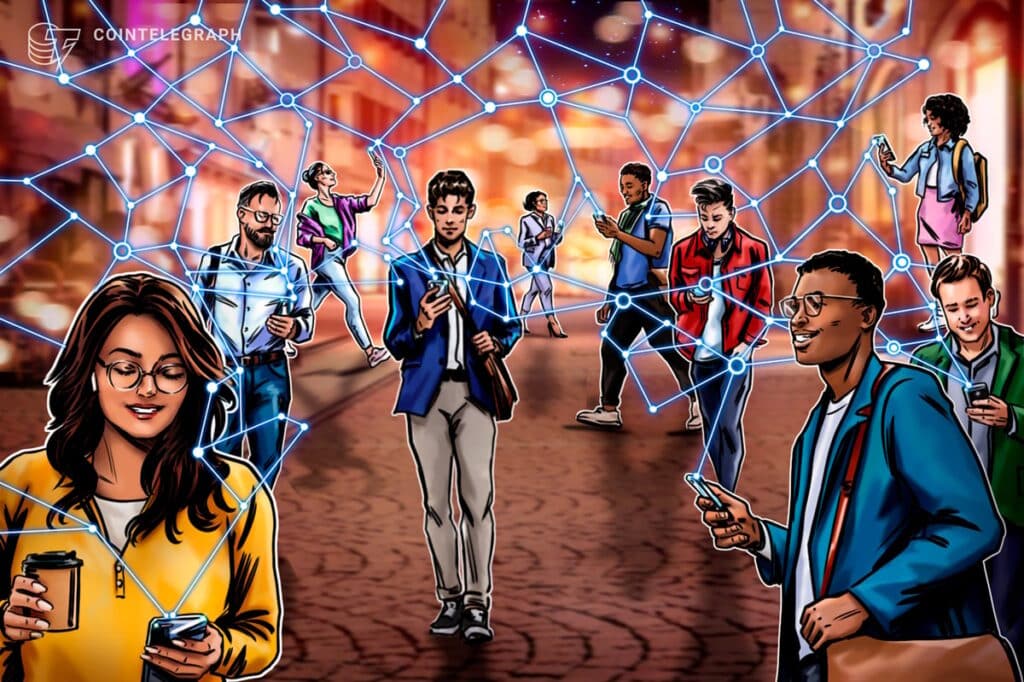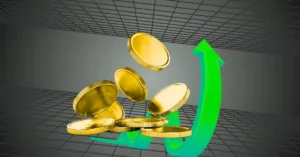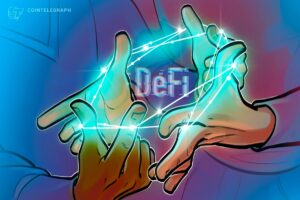Decentralized Physical Infrastructure Network (DePIN), explained.

What does DePIN mean?
Decentralized Physical Infrastructure Networks (DePIN) refers to the application of blockchain technology and decentralized principles to physical infrastructure and systems.
The rise of blockchain technology in recent years has revolutionized how we perceive and interact with digital systems. From Decentralized Finance (DeFi) to Virtual Tokens (NFTs), decentralized principles have revolutionized various aspects of our digital lives. However, this revolution is not limited to the virtual world.
Enter Decentralized Physical Infrastructure Networks (DePINs), which extend decentralization into physical infrastructure, promising to shape industries and empower individuals like never before. DePINs enable autonomous and real-time interaction within physical infrastructure through technologies such as smart contracts and the Internet of Things (IoT), enabling system responsiveness and adaptation to human needs.
After the initial narratives around stores of value like Bitcoin (BTC) and speculative investments like Altcoins, blockchains can impact the lives of ordinary citizens through DePINs. DPin uses blockchain technology to improve security, efficiency and transparency in physical systems such as renewable energy grids and supply chain operations.
For example, DePINs can provide immutable product records in supply chain management, ensuring accuracy and transparency from manufacturing to delivery. Similarly, blockchain technology enables peer-to-peer (P2P) energy trading in the power distribution space. This decentralizes and democratizes access to energy resources by allowing solar-powered homes to sell excess energy to nearby households.
In addition, renewable energy integration complements DPs and reduces their environmental impact by ensuring sustainable energy sources for blockchain operations and IoT devices. Another core element, Decentralized Autonomous Organizations (DAOs), augments the ecosystem by allowing for autonomy and independent decision-making, allowing stakeholders to co-direct the growth of the network.
The origin and evolution of DePINs
The seeds of DPin were sown by early explorations of blockchain's potential beyond digital currencies.
Projects like Power Ledger and OpenBazaar have laid the groundwork by showing how blockchain can decentralize power distribution and e-commerce. Power Ledger enables individuals to trade excess energy peer-to-peer, creating a more efficient and sustainable energy ecosystem.
Meanwhile, Openbazaar facilitates direct transactions between buyers and sellers, eliminating the need for middlemen in online business. As the concept took hold, new initiatives emerged, expanding the scope of DePINs in various domains. For example, Helium uses blockchain technology to create a decentralized wireless network that allows individuals to earn rewards for delivering coverage and connectivity.
Render introduces a decentralized cloud computing platform, which provides scalable and cost-effective infrastructure for developers and businesses. Unlike traditional cloud computing services that are typically centralized and managed by a single entity (e.g. Amazon Web Services, Microsoft Azure, Google Cloud), the Render platform decentralizes computing resources across a network of individual providers.
Filecoin revolutionizes decentralized storage by using blockchain technology to create secure distributed networks for data storage, where participants are incentivized through a marketplace to rent out their unused storage space.
How do DePINs work?
DPin works by using blockchain technology to disperse power and governance throughout the network, rather than concentrating it in the hands of a single organization.
DPINs operate in many domains: peer-to-peer renewable energy trading, supply chains to increase transparency and efficiency, telecommunications contractors for continuous Internet access, data storage for secure and distributed data management, decentralized mobility solutions for transportation and real estate for accelerated asset transactions.
To understand how DePINs work, consider a DePIN application in the energy industry, such as a decentralized energy grid. In this setup, individual solar-powered homes can generate their own electricity and sell additional power directly to the grid or to neighbors, bypassing the need for a traditional centralized utility.
Every transaction – whether it involves energy production, consumption or sale – is recorded on the blockchain, which ensures transparency and trust between the parties. When specific criteria are met, such as when excess energy is offered for sale, smart contracts automate these transactions, ensuring efficiency and reliability in energy distribution.
This decentralized model not only facilitates the distribution of energy based on current supply and demand, but also promotes the use of renewable energy sources. It promotes the development of a more robust and sustainable energy environment and reduces dependence on large and centralized energy supplies. DePINs democratize energy production and distribution by enabling people to become producers and consumers (commonly referred to as “consumers”). This makes power more accessible and equitable.
Some decentralized energy systems incentivize users with cryptographic or digital tokens in exchange for the energy they contribute to the network. Token rewards serve as a compelling incentive for stakeholders to invest, maintain and leverage their investments to ensure its growth and sustainability.
In the cryptocurrency realm, DePINs can feature platforms such as DeFi that use blockchain technology to provide financial services including loans, mortgages and trading without the need for conventional financial intermediaries. Tokens, in which tangible assets (such as real estate, artwork or goods) are represented on the blockchain as digital tokens to enable decentralized ownership and trading, are one way these platforms can interact with real assets.
Architectures for scaling DP applications on blockchain infrastructure
Certain key features of the underlying blockchain infrastructure are necessary for DePIN applications to scale smoothly, and blockchains are likely to continue the development of the DePIN project with these architectural considerations in mind.
Size capacity
Blockchain must be able to handle large volumes of transactions and data flows to support the needs of decentralized physical networks.
Marketing economics
As Deepin applications see many types of transactions, per-transaction fees must be kept low to maintain their sustainability. Therefore, an underlying blockchain that cannot manage low transaction fees with a large number of transactions may be unsuitable for DePIN projects.
interaction
Seamless interoperability with other blockchain networks and legacy systems is essential for DePIN applications to efficiently share and exchange data.
Security
Strong security mechanisms, including encryption, authentication and consensus algorithms, are essential to protect sensitive data and ensure the integrity of DePIN networks.
Usability
User-friendly interfaces and intuitive design that allow individuals and organizations to participate in the DePIN ecosystem without specialized technical expertise are critical to widespread adoption.
DePINs vs. Darrens
While DePINs mainly explain the physical aspects of decentralized systems, DePINs focus on the virtual and resource-based aspects.
There are two different paradigms in decentralized systems: DePINs and Decentralized Data Networks (Derens). DePINs focus on building decentralized networks for physical infrastructure, such as communication networks, power distribution networks, and transportation networks. By sharing resources and control between different nodes, these networks seek to improve accessibility, efficiency and resilience, and lower their dependence on central institutions.
Derens, on the other hand, emphasize the decentralization of resource management and allocation. These networks enable the peer-to-peer, middleman-free exchange of resources such as storage, processing power, and even financial assets. DeRENs reduce the need for centralized platforms by facilitating direct user interaction and encouraging autonomy, equal access and scalability.
Here are some key differences between the two.
Opportunities and challenges regarding decentralized physical networks
DePINs enable decentralized control, resilience building, equitable access to resources and sustainability. However, regulatory and deployment barriers, as well as security concerns, hinder widespread adoption, particularly in regulated sectors such as telecoms.
DePINs offer many benefits, such as improved system resilience and efficiency, more equitable access to resources, and the promotion of sustainable practices. DePINs reduce single points of failure by distributing control and operations across the entire network, strengthening systems to prevent outages.
It allows people to share and benefit from shared resources such as electricity or data storage, and encourages a more inclusive economy. In addition, DPins promote P2P transactions and the use of renewable resources, resulting in affordable and eco-friendly solutions that enable sustainability and innovation in a variety of industries.
Despite DP's promises, significant challenges loom on the horizon. Regulatory hurdles, measurement limitations, interoperability issues, and infrastructure requirements pose serious obstacles to widespread adoption. Integrating blockchain with physical systems requires strong security measures, privacy protections, and user-friendly interfaces.
The industries that some DPs serve, such as telecoms, are often highly regulated. Therefore, over time these industries and DPin projects should have a constructive dialogue to benefit retail users.
The future of decentralized physical networks
Decentralized physical networks hope to leverage blockchain, IoT, and renewable energy to create robust, efficient, and community-driven infrastructure across multiple domains.
As DePINs continue to evolve, the future is ripe with opportunities. From optimizing resource use in power distribution, telecommunications and transportation to democratizing access to essential services such as health and education, the potential impact of DPs is enormous.
However, realizing this vision will require collaboration among stakeholders, regulatory support, and continued technological innovation to address existing challenges and unlock the full potential of decentralized physical networks. Innovation in distributed networks is critical to sustainably expand these applications.
With the right framework, DPs have the power to change the world for the better, enabling individuals and communities to shape future infrastructure in a decentralized, equitable and sustainable way.













